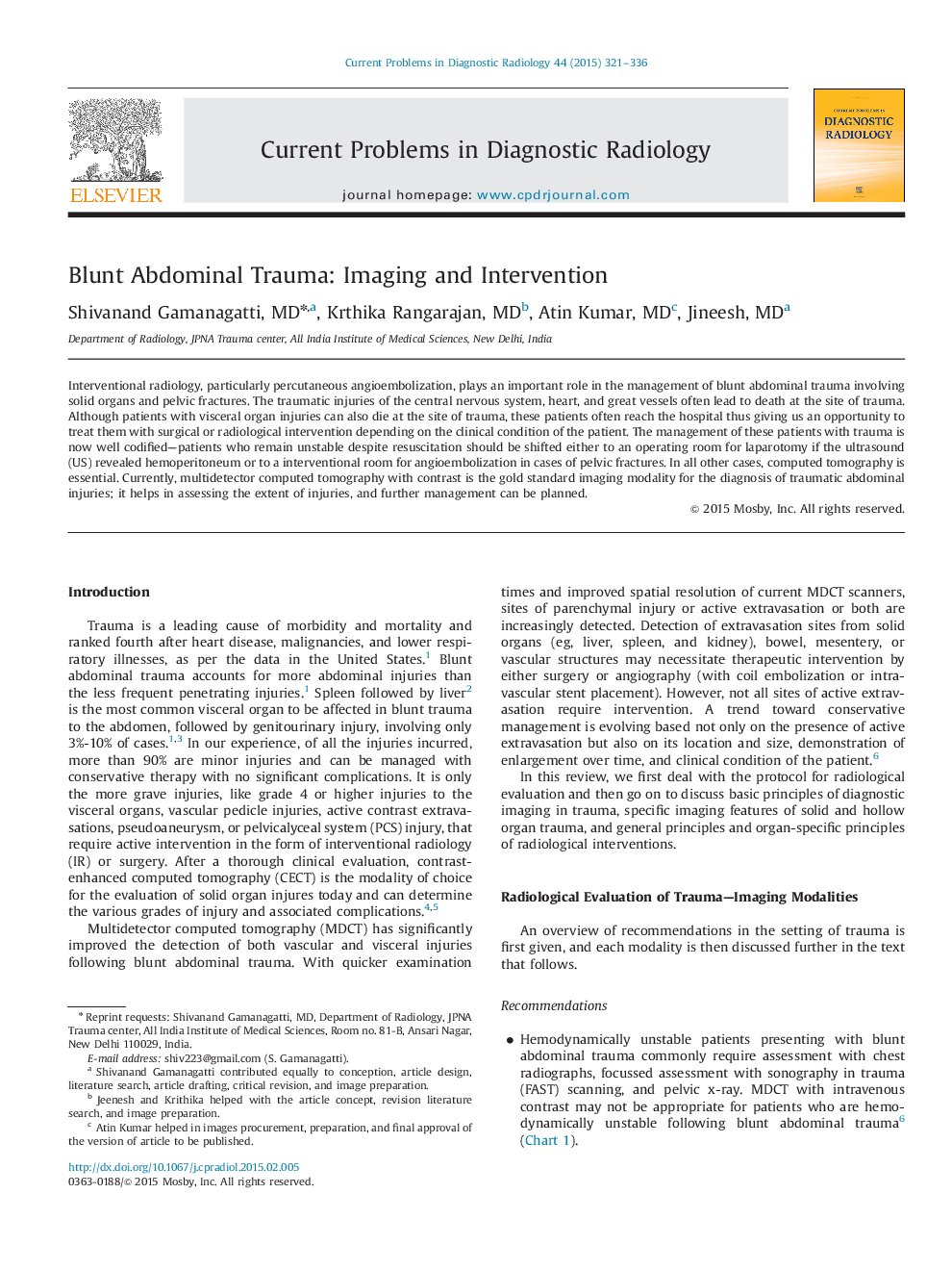| Article ID | Journal | Published Year | Pages | File Type |
|---|---|---|---|---|
| 4223522 | Current Problems in Diagnostic Radiology | 2015 | 16 Pages |
Interventional radiology, particularly percutaneous angioembolization, plays an important role in the management of blunt abdominal trauma involving solid organs and pelvic fractures. The traumatic injuries of the central nervous system, heart, and great vessels often lead to death at the site of trauma. Although patients with visceral organ injuries can also die at the site of trauma, these patients often reach the hospital thus giving us an opportunity to treat them with surgical or radiological intervention depending on the clinical condition of the patient. The management of these patients with trauma is now well codified—patients who remain unstable despite resuscitation should be shifted either to an operating room for laparotomy if the ultrasound (US) revealed hemoperitoneum or to a interventional room for angioembolization in cases of pelvic fractures. In all other cases, computed tomography is essential. Currently, multidetector computed tomography with contrast is the gold standard imaging modality for the diagnosis of traumatic abdominal injuries; it helps in assessing the extent of injuries, and further management can be planned.
